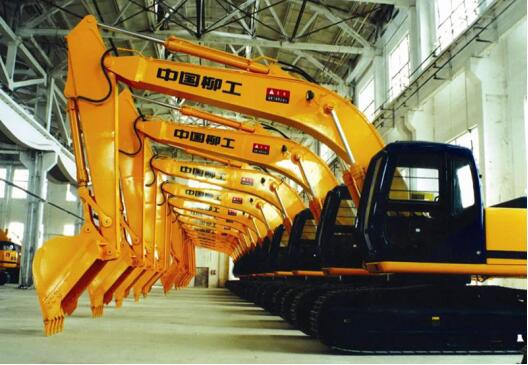Track links play a critical role in the overall stability and maneuverability of an excavator.
Here’s how track links contribute to these aspects:
Weight Distribution: The track links, along with the rest of the undercarriage components, support the weight of the excavator. The weight of the machine is distributed over a larger surface area, reducing ground pressure and enhancing stability. This allows the excavator to operate on various terrains, including soft or uneven surfaces, without sinking or tipping over.
Traction and Grip: The design of the track links, including the treads or cleats on their outer surface, helps provide traction and grip. The track links make contact with the ground, allowing the excavator to move forward, backward, and turn with stability. The grip provided by the track links enables the machine to traverse challenging terrains, such as loose soil, mud, or steep inclines, without slipping or losing control.
Enhanced Mobility: The interconnected track links enable the excavator to move smoothly and efficiently. The continuous track system allows for a larger contact area with the ground, distributing the machine’s weight evenly. This results in reduced ground pressure, minimizing the risk of sinking and enabling the excavator to move more effortlessly, even on softer or less stable surfaces.
Versatility: The track links contribute to the versatility of an excavator by allowing it to operate in various environments. Whether on construction sites, takeuchi excavator parts agricultural fields, or rugged terrains, the tracks provide stability and maneuverability, enabling the machine to access different work areas and perform tasks efficiently.
Turning and Steering: The track links enable the excavator to turn and steer. By controlling the speed and direction of the individual tracks, the machine can make precise turns and navigate tight spaces. This maneuverability is crucial for working in confined areas or when performing intricate tasks.
Absorption of Shock and Vibration: The track links, along with other undercarriage components, absorb shock and vibration generated during operation. This helps reduce the impact on the operator, the machine, and the materials being handled. The absorption of shock contributes to smoother operation, improved operator comfort, and reduced stress on the excavator’s structural components.
Overall, the track links provide stability, traction, maneuverability, and weight distribution, allowing the excavator to perform a wide range of tasks in various terrains and environments. Their design and functionality are crucial factors in ensuring the excavator’s overall stability and maneuverability during operation.
What are some common signs of wear or damage in excavator track links?
Several common signs of wear or damage in excavator track links include:
Track Link Elongation: Over time, track links can elongate due to continuous use and the stress they endure. Excessive elongation can lead to increased clearance between track links, resulting in reduced stability and increased wear on other undercarriage components.
Track Link Pin and Bushing Wear: The pins and bushings that connect the track links can wear out over time. Excessive wear can cause looseness between the track links, resulting in reduced stability and increased vibration during operation. Visual signs include elongation of pin and bushing holes, excessive play between the links, or observable wear on the pin and bushing surfaces.
Cracked or Bent Track Links: Heavy impacts or improper operation can cause track links to crack or bend. Cracks can weaken the integrity of the link, leading to failure or further damage. Bent track links can impact the machine’s stability and result in uneven wear on other undercarriage components.
Excessive Wear on Track Link Surfaces: Continuous contact with the ground and abrasive materials can cause wear on the outer surfaces of the track links. Excessive wear can result in reduced traction and compromised stability. Signs of wear include noticeable thinning of the link surface, uneven wear patterns, or visible damage to the treads or cleats.
Track Link Joint Seals: Track links often have joint seals that help retain lubrication and protect the internal components. Damaged or deteriorated joint seals can result in lubricant leakage, leading to inadequate lubrication of the pins and bushings and accelerated wear.
Track Link Misalignment: Misalignment of track links can occur due to improper tensioning or damage to the undercarriage components. Misalignment can lead to premature wear, increased friction, and reduced stability during operation. Visual signs include uneven spacing between track links or irregular track alignment.
Excessive Noise and Vibration: Unusual noise or increased vibration during excavator operation can indicate potential wear or damage in the track links. Excessive noise or vibration may suggest loose or worn-out track links, misalignment, or other issues that require inspection and maintenance.
It’s important to regularly inspect the excavator’s track links and undercarriage components for these signs of wear or damage. Timely identification and appropriate maintenance or repairs can help prevent further damage, ensure optimal performance, and extend the lifespan of the track links.
